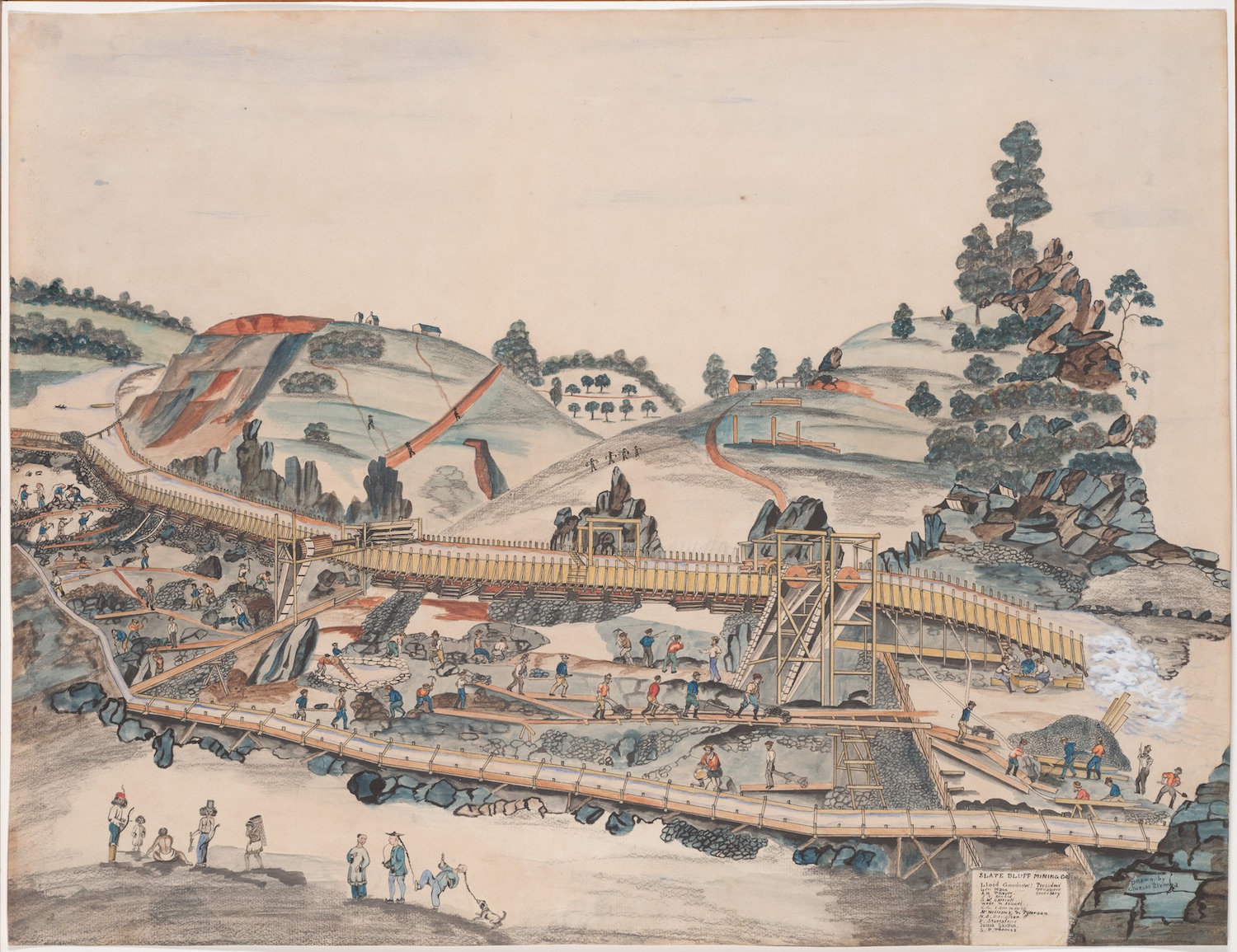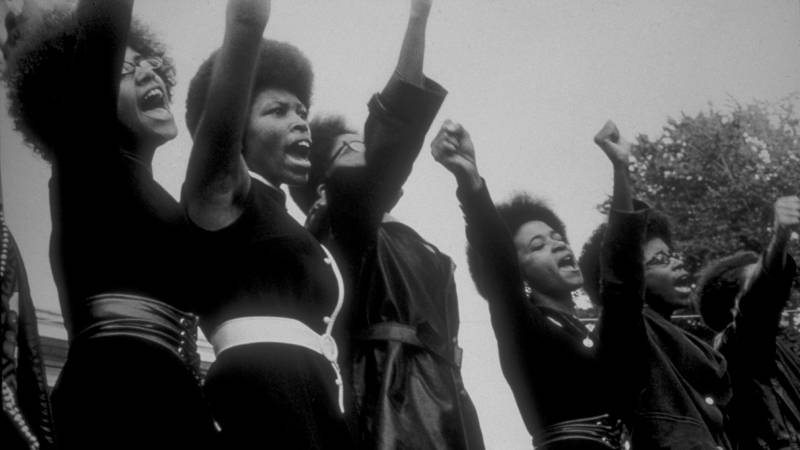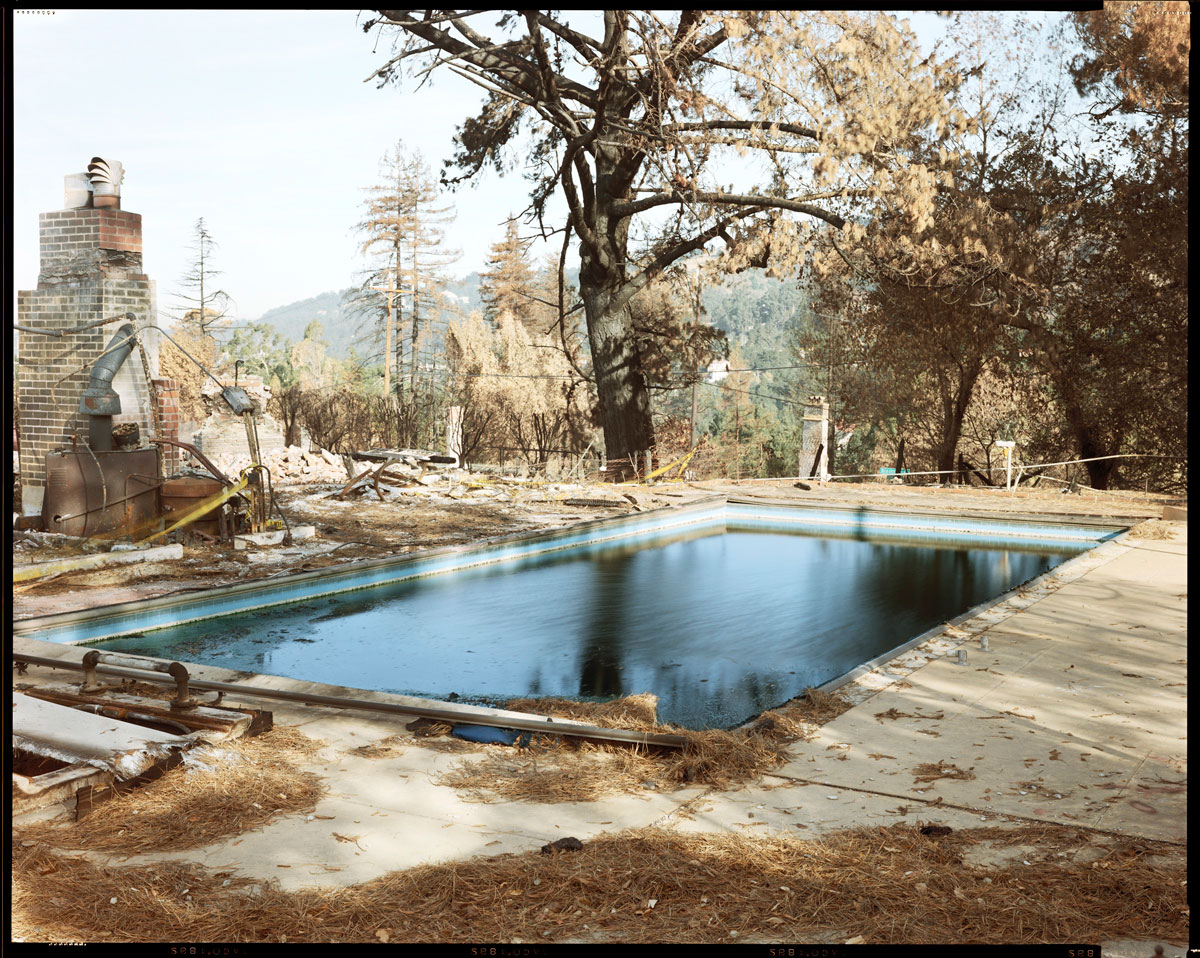At the Berkeley Art Museum and Pacific Film Archive, a show about California’s geography begins with a wall of people. Catherine Opie’s intimate photograph of two farmworkers wrapped in a butch embrace bleeds into an early photo of Jello Biafra smashing his mouth against a microphone. His hyper-masculinity contrasts starkly with a row of women, photographed by Pirkle Jones, throwing their fists up to signal black power. These people, easily associated with the Bay Area and its unique history, are translated by the show’s narrative into economic and social landscapes, demonstrating how a geographic underpinning defines the way people create and occupy space.
Land of Promise and Peril: Geographies of California is the latest iteration of Cal Conversations, BAMPFA’s collaborative series with UC Berkeley. As members of a UC Berkeley undergraduate course, students select work from the museum’s vast collection to curate an exhibition, empowering them to bring their perspectives and political concerns to the public.
The show is primarily composed of medium-format photographs, which associate curator Stephanie Cannizzo—who supported geography professor Seth Lunine and his California geography class in designing the exhibition—explained relates to the students’ desire to feature as many artists as possible. This contributed to the show’s diverse array of artists, featuring work by Dorothea Lange, Bill Owens, Chiura Obata, Kim Abeles, Ruth-Marion Baruch and at least a dozen others.

A few standout multimedia pieces are included, such as artist Brian D. Tripp’s 1992 collage. Combining thin sheets of colored plastic, which have the reflective qualities of tinfoil, the artist spells out “they think they own the place” in reds and yellows. Eminently striking, the piece is made more interesting by its explicit relationship to geography. The hard-edge motifs in Tripp’s work reference Karuk geography, the tribe to which he belongs, and it was made to commemorate the 500th anniversary of America’s “discovery.” A favorite of the curatorial team, it centers many critical intersections of race, colonization, and resource extraction.
In student curator Jocelyn Gama’s reflection, she writes that “the metallic and crinkly silver material in Brian Tripp’s artwork … reminds me of the aluminum-colored blankets ICE agents give children and families currently incarcerated in ICE detention centers.” She adds, “The battle is not over.”





